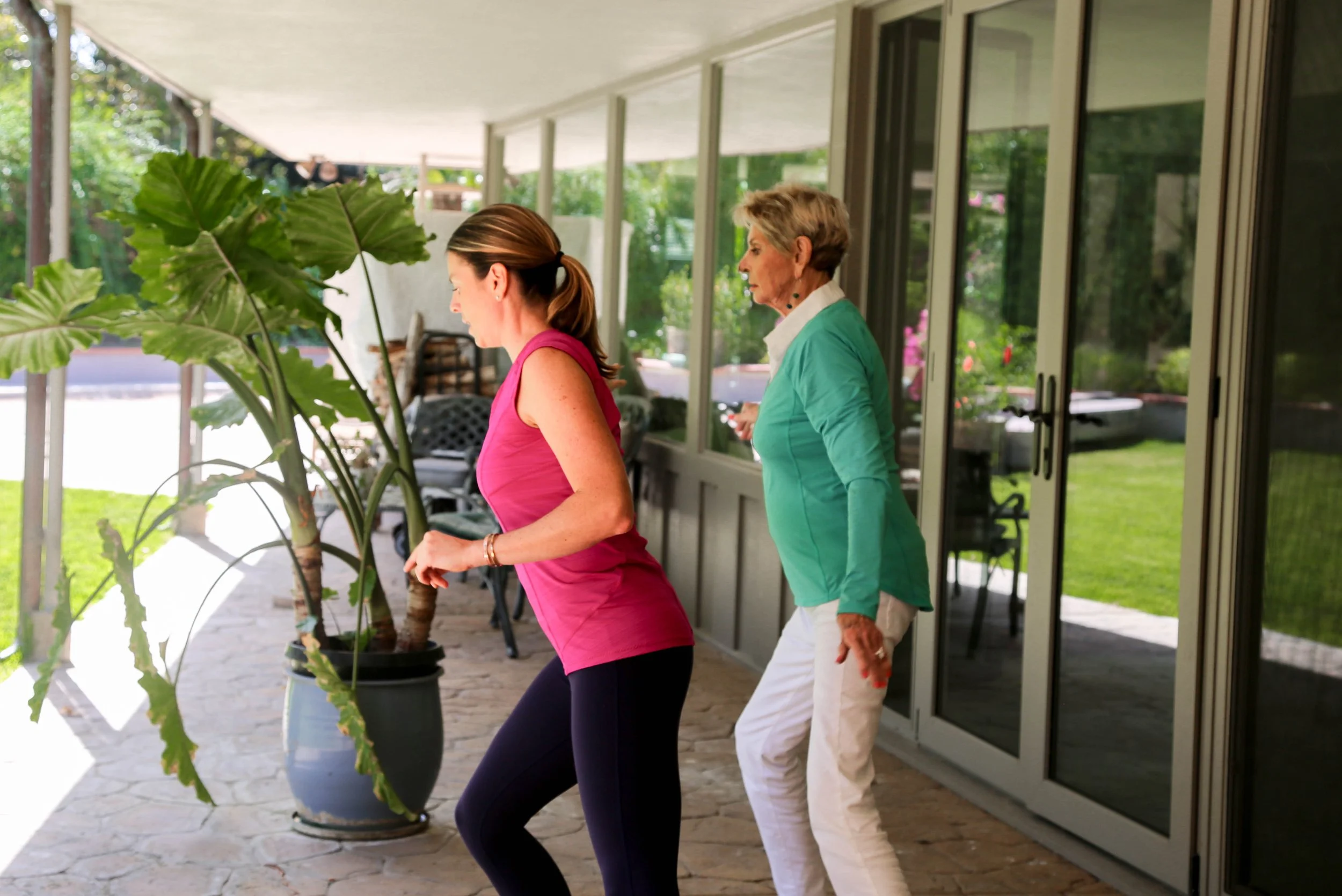Longevity Through Movement: How to Keep Doing the Activities You Love for Decades to Come
Healthspan is defined as the number of years a person remains free of significant illness or disease. As a Physical Therapist for 15 years, I’ve witnessed how moving your body can help improve your healthspan.
Have you noticed how little aches and stiffness seem to sneak up as the years go by? One year you’re hiking, running, or playing your favorite sports, and the next you’re wondering why a short walk leaves your knees sore.
Here’s the good news: your body doesn’t have to slow down with age. With intentional movement, you can defy your age, stay active, and keep doing what you love—well into your 70s and beyond.
The question is: how do you take care of your body today so your future self can keep moving freely?
Step 1: Let’s look at Longevity, Picture Your Future Active Self
Close your eyes for a moment. Picture yourself 10 years from now.
What activities do you want to be doing without hesitation—hiking, biking, skiing, playing with grandkids, or traveling without discomfort?
What little aches or stiffness are showing up today that could become bigger obstacles later?
Are your current workouts and movement habits building long-term strength—or just getting you through the week?
Knowing what you want your future self to be able to do makes it easier to move with purpose now. Think of this as your personal blueprint for defying your age through movement.
Step 2: Why Investing in Your Body Pays Off for Longevity
Strength, mobility, and balance naturally dip with age—but “natural” doesn’t mean “unavoidable.” With consistent training, you can maintain—or even improve—your physical capacity well into your 70s and beyond.
Every walk, stretch, lift, or mobility drill is like making a deposit in your body’s “freedom account.” The more you invest now, the more energy, mobility, and independence you’ll have later.
Step 3: Three Simple Self-Checks That Predict Longevity
Here are three easy ways to see how your body is doing today—and where you might want to focus your movement investments.
1. Grip Strength & Longevity
Why it matters: Grip strength is a surprisingly strong predictor of overall health, functional strength, and independence.
Quick test: Squeeze a tennis ball or use a hand dynamometer. Does one side feel weaker?
How to improve: Farmer’s carries, weight training, dead hangs and targeted grip exercises.
Watch how to improve grip strength →
2. Ankle Mobility & Longevity
Why it matters: Flexible ankles keep your walking, running, squatting, and balance in check—and help prevent falls.
Quick test: Stand facing a wall, one foot about 4–5 inches back. Can your knee touch the wall without your heel lifting? Test both sides.
How to improve: Stretching, ankle mobility drills, and foam rolling.
Watch how to improve ankle mobility →
3. Single-Leg Balance & Longevity
Why it matters: Good balance protects against falls and reflects overall muscular and neurological health.
Quick test: Stand barefoot on one leg for 20–30 seconds. Can you hold it on both sides? For a challenge, try closing your eyes.
How to improve: Single-leg exercises, lunging exercises, yoga poses, and balance drills.
Watch how to improve balance →
Step 4: Build Your Personal Movement Plan
These self-checks aren’t about passing or failing—they’re feedback on your “movement portfolio.” Notice a weaker area?
We can help!
The Bottom Line
Your body is the ticket to the life you want to live. Every step, lift, stretch, or balance drill is a deposit in your future freedom. By investing in your strength, mobility, and balance today, you’re setting yourself up to defy your age through movement and stay active for decades to come.
Resources:
Vaishya R, Misra A, Vaish A, Ursino N, D'Ambrosi R. Hand grip strength as a proposed new vital sign of health: a narrative review of evidences. J Health Popul Nutr. 2024 Jan 9;43(1):7.
Brantner JN, Basmajian JV. Effects of training on endurance in hanging by the hands. J Mot Behav. 1975 Jun;7(2):131-4.
Chisholm MD, Birmingham TB, Brown J, Macdermid J, Chesworth BM. Reliability and validity of a weight-bearing measure of ankle dorsiflexion range of motion. Physiother Can. 2012 Fall;64(4):347-55.
Springer et al., 2007. Normative values for the unipedal stance test with eyes open and closed.

